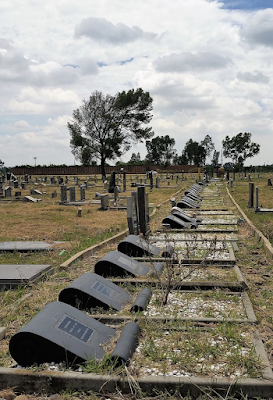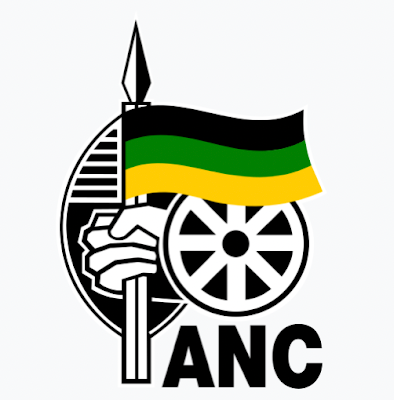December 16 is an important date in South Africa’s history. It is known as the Day of Reconciliation, although that is not what I knew it by when I was growing up.
I knew it originally as Dingaan’s Day, but didn’t give the name any thought until I was in high school. Until then, it was a rather meaningless public holiday for a kid since it fell in schools’ summer holidays.
When I did start thinking about it – about the time I was becoming politically aware – I found everything about the holiday confusing. Let’s take a look at the history.
When the British took over the Cape from the Dutch in 1806, they started to restrict slavery. From 1807, no British colonies were allowed to import slaves, although existing slaves continued as slaves. Eventually, in 1834, slavery was abolished in all British colonies.
 |
| Cape Town and Table Mountain |
For the most part, it was Dutch farmers in the Cape who owned slaves, so the abolition of slavery had huge implications for them. Unwilling to put up with this disruption to their traditional way of living, the Dutch farmers decided to leave the sphere of British rule by moving to the interior of southern Africa, where they could continue to live as before.
 |
| 17th century Cape farmer's home |
This resulted in what is known as the Great Trek, where hundreds of Dutch farmers and their families, known as Voortrekkers, left the Cape in their ox wagons and headed into the interior.
 |
| Painted by Janes E McConnell |
However….
The situation in the interior and farther north and east along the coast was different from the Cape. These were the lands of Black groups, such as the Xhosas and Zulus. They were not immediately amenable to sharing their lands with Whites from the south. Some of the Voortrekker groups tried to come to agreements with Black rulers to either share land or to acquire land. A group of about 600 Voortrekkers, men women, and children, under the leadership of Piet Retief, thought they had come to such an agreement, but were massacred by the troops of Zulu chief, Dingane.
 |
| Dingane ordering the massacre of Piet Retief's group |
Later that year, on December 16, another Voortrekker group of 464 armed men seeking revenge under Andries Pretorius, defeated thousands of Dingane’s men at what became known as the Battle of Blood River. The Voortrekkers took a vow that day, made a covenant with God – a Calvinistic Christian god – to forever give thanks for their victory.
 |
| Circle of wagons (a laager) at Blood River |
The victory became a rallying point for the cultural and religious growth of the Dutch speaking people of southern Africa, later known as the Afrikaners. In 1864, the Dutch Reformed Church in the area where the victory had taken place declared December 16 to be "an ecclesiastical day of thanksgiving by all its congregations". In 1894, the day was declared a public holiday by the Voortrekker republic of the Orange Free State.
What puzzled me when I started thinking about the holiday is why it was named after the person who was defeated. I couldn’t imagine May 8, for example, being called Hitler Day.
[Another reason I was confused by the holiday was that it was known as Dingaan's Day. However the name of the chief was Dingane, with the 'e' pronounced.]
Further reading informed me that the Afrikaners called the day by several names: Dingaan's Day, Dingane’s Day, the Day of the Covenant, the Day of the Vow. In fact, in 1952, the apartheid government of South Africa officially renamed Dingane’s Day to the Day of the Covenant, and in 1960 renamed it again to the Day of the Vow.
On December 16, 1949, a huge granite monument – the Voortrekker Monument – was unveiled outside Pretoria, an event attended by about a quarter of a million Afrikaners, many of whom were dressed in old Voortrekker period costume.
 |
| Voortrekker Monument |
It is not surprising, given the White dominance of all life in South Africa, that the country had a national holiday to celebrate the defeat of a people whose land was being invaded.
However, the date has another side to it.
Starting in 1910, South African Blacks decided to use the same day to protest against racial discrimination. In 1929, 1930, and 1934, the South African Communist Party held protests against discrimination, and in 1935 the All African Convention was held over that date.
When the leading voice of Blacks against apartheid – the African National Congress (ANC) –failed to extract any relaxation of apartheid after the massacre at Sharpeville on March 21, 1960 (now a public holiday known as Human Rights Day), they decided the time had come that peaceful protests would never work. They formed an organization called uMkhonto we Sizwe, or Spear of the Nation, to undertake acts of violence against the government.
 |
| Graves of the 69 people killed at Sharpeville |
On December 16, 1961, multiple explosions took place all over South Africa against government installations. Needless to say, this hardened the attitude of the apartheid government, and many Black leaders, including Nelson Mandela, started being arrested and jailed.
For the next nearly 30 years, uMkhonto we Sizwe was responsible for more bombings, often at non-government sites, resulting in casualties of ordinary citizens of all colours. It also had a big presence outside South Africa and often used torture and summary execution of people it felt were undermining it.
 |
| uMkhonto we Sizwe |
The remarkable Truth and Reconciliation Commission, which first convened on December 16, 1995, (after the country became a democracy) found that the uMkhonto we Sizwe had violated human rights on a number of occasions.
As part of the process of healing, which was at the core of the Truth and Reconciliation Commission, Archbishop Desmond Tutu, together with Nelson Mandela, proposed that December 16 be renamed once again to the Day of Reconciliation.
 |
| Archbishop Desmond Tutu |
And that is a process I can celebrate.

















A day with a varied history behind it.
ReplyDeleteAfrica never fails to surprise and amaze me in so many ways. Now this. Thanks, Stan.
ReplyDeleteI cannot agree more, Stan. Reconciliation Is what the whole world seems to need. I wish we would all hurry up and adopt the process and live by it. The depth and intensity of conflict all around the world is just heartbreaking.
ReplyDelete